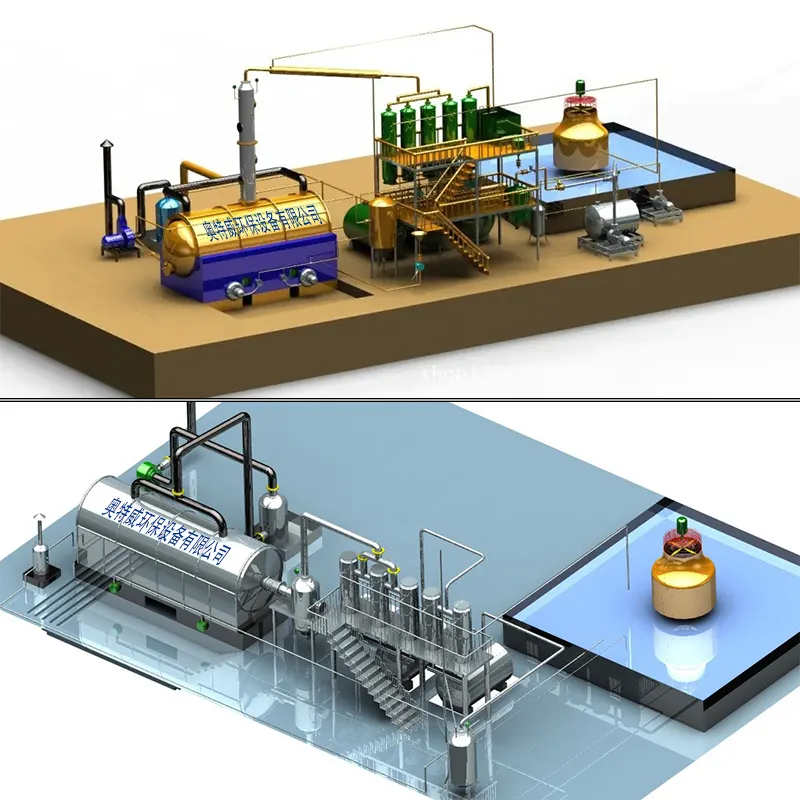Oprema za destilaciju čini temelj mnogih industrijskih procesa, od rafiniranja petrokemijskih proizvoda do proizvodnje lijekova. Ova sofisticirana tehnologija omogućuje odvajanje tekućih mješavina na temelju razlika u isparljivosti, čime postaje nezaobilazna za proizvodnju visokokvalitetnih proizvoda. Odabir odgovarajuće destilacijske opreme može znatno utjecati na operativnu učinkovitost, kvalitetu proizvoda i ukupan poslovni uspjeh.
Moderne industrijske tvornice u velikoj mjeri se oslanjaju na točne procese separacije, a odabir prave destilacione opreme zahtijeva pažljivo razmatranje više čimbenika. Bez obzira na to širite li postojeće operacije ili postavljate novu tvornicu, razumijevanje detalja destilacijskih sustava pomoći će osigurati optimalnu učinkovitost i povrat ulaganja.
Tema svakog destilacijskog sustava leži u njegovim osnovnim komponentama. Destilacijska kolona služi kao primarni spremnik u kojem se odvija separacija, a obično ima više stupnjeva ili ploča za učinkovitu separaciju komponenata. Unutarnji dijelovi kolone, uključujući ploče, nasipna tijela i distributore, igraju ključnu ulogu u maksimiziranju kontakta između parnog i tekućeg faznog stanja.
Reboileri i kondenzatori rade u tandemu kako bi održali odgovarajuće termalne gradijente kroz cijeli sustav. Reboiler osigurava unos topline za isparavanje, dok kondenzator omogućuje hlađenje i prikupljanje destiliranih produkata. Pomoćne komponente poput pumpe, ventila i sustava za upravljanje osiguravaju glatko funkcioniranje i preciznu kontrolu procesa.
Suvremena oprema za destilaciju uključuje sofisticirane značajke automatizacije koje poboljšavaju operativnu učinkovitost. Senzori temperature, manometri i mjerači protoka pružaju podatke u stvarnom vremenu za optimizaciju procesa. Napredni sustavi upravljanja omogućuju automatske prilagodbe za održavanje optimalnih radnih uvjeta, smanjujući potrebu za stalnim ručnim intervencijama.
Mogućnosti integracije s kontrolnim sustavima cijele tvornice omogućuju bezproblémno funkcioniranje i prikupljanje podataka. Ova povezanost omogućuje planiranje preventivnog održavanja i optimizaciju performansi na temelju povijesnih operativnih podataka.
Kada odabirete destilacionu opremu, točna procjena zahtjeva za kapacitetom je ključna. Uzmite u obzir trenutne potrebe proizvodnje i moguću buduću proširenja. Sustav bi trebao izdržati različite brzine dovoda i istovremeno održavati učinkovitost odvajanja. Veća oprema pruža operativnu fleksibilnost, ali može dovesti do nepotrebnih kapitalnih izdataka.
Rasponi radnog tlaka i zahtjevi za temperaturom moraju biti usklađeni s procesnim specifikacijama. Operacije pod visokim tlakom mogu zahtijevati posebne materijale i sigurnosne značajke, dok sustavi za destilaciju pod vakuumom zahtijevaju dodatne razmisliti o brtvljenju i kontroli tlaka.
Odabir građevinskog materijala znatno utječe na trajnost opreme i čistoću proizvoda. Nehrđajući čelik ostaje popularan zbog otpornosti na koroziju i izdržljivosti, ali specijalizirane aplikacije mogu zahtijevati egzotične legure ili opremu obloženu staklom. Razmotrite kemijsku kompatibilnost svih dijelova izloženih tekućinama i sredstvima za čišćenje.
Zahtjevi glede površinske obrade, posebno u farmaceutskim i aplikacijama namijenjenim za hranu, mogu utjecati na odabir materijala i metode izrade. Pravilno dokumentiranje certifikata o materijalima i izvješća o ispitivanjima osigurava sukladnost s industrijskim standardima i regulatornim zahtjevima.

Početni kapitalni trošak predstavlja samo dio ukupnih troškova vlasništva za destilacijsku opremu. Potrošnja energije često čini značajan dio operativnih troškova. Dizajni visoke učinkovitosti i opcije integracije topline mogu znatno smanjiti troškove komunalija tijekom vijeka trajanja opreme.
Zahtjevi za održavanje i dostupnost rezervnih dijelova utječu na dugoročne operativne troškove. Odabir opreme od utvrđenih proizvođača osigurava pouzdanu podršku i dostupnost dijelova. Razmotrite omjer troškova i korisnosti automatiziranih značajki koje mogu smanjiti potrebe za radnom snagom i poboljšati operativnu učinkovitost.
Fizička ograničenja prostora često utječu na odabir i konfiguraciju opreme. Za vertikalne zahtjeve za visokim stupovima potrebno je uzeti u obzir pristup za instalaciju i održavanje. Razmotrite lokaciju pomoćne opreme i priključaka za komunalne usluge pri planiranju konfiguracija rasporeda.
Zahtjevi za instalaciju mogu uključivati posebne temelje, strukturne potpore i radne platforme. Pravilno planiranje isporuke i sastavljanja opreme može spriječiti skupocene kašnjenja i izmjene tijekom instalacije.
Oprema za industrijsku destilaciju mora uključivati odgovarajuće sigurnosne značajke kako bi se zaštitili osoblje i objekti. Sustavi za otpuštanje tlaka, mogućnosti hitnog zaustavljanja i odgovarajuća ventilacija su važne razmatranja. Zahtjevi za zaštitu od požara mogu utjecati na razmještanje opreme i odabir materijala.
Klasifikacije opasnih zona utječu na odabir električnih i instrumentacijskih komponenata. Pravilno dokumentiranje sigurnosnih značajki i postupaka rada olakšava pridržavanje propisa i obuku operatera.
Ekološki propisi često određuju zahtjeve za kontrolu emisija i postupke rukovanja otpadom. Uzmite u obzir potrebu za sustavima za povraćaj para i značajkama za sadržavanje. Zahtjevi za dokumentaciju za ekološke dozvole mogu utjecati na odabir opreme i mogućnosti praćenja.
Industrijski specifične regulative mogu nametnuti dodatne zahtjeve u odabiru materijala i konstrukcijskim značajkama. Održavanje odgovarajuće dokumentacije mjera usklađenosti osigurava glatke inspekcije i rad pod nadzorom.
Primarni čimbenici koji utječu na učinkovitost destilacijske opreme uključuju konstrukciju kolone i odabir unutarnjih elemenata, kontrolu radnog tlaka i temperature, dosljednost kvalitete sirovine te prakse pravilnog održavanja. Optimalna učinkovitost zahtijeva pažljivu ravnotežu ovih elemenata uz redovito praćenje i prilagodbu radnih parametara.
Strategije optimizacije energije uključuju uvođenje sustava za integraciju topline, odabir učinkovitih unutarnjih dijelova stupova, održavanje odgovarajuće izolacije te korištenje naprednih sustava upravljanja. Redovito održavanje površina za izmjenu topline i optimizacija radnih uvjeta također doprinose smanjenju potrošnje energije.
Bitna pitanja održavanja uključuju redovni pregled unutarnjih dijelova stupova, praćenje brzine korozije, održavanje mehaničkih brtvila i zaptivki, kalibraciju instrumenata te čišćenje površina za izmjenu topline. Primjena programa prevencije pomaže u osiguranju pouzdanog rada i produženju vijeka trajanja opreme.
 Vruće vijesti
Vruće vijesti2024-09-25
2024-09-18
2024-09-12
2024-09-05
2024-08-30
2024-08-23

Autorska prava © 2025 Shangqiu AOTEWEI environmental protection equipment Co.,LTD Politika privatnosti